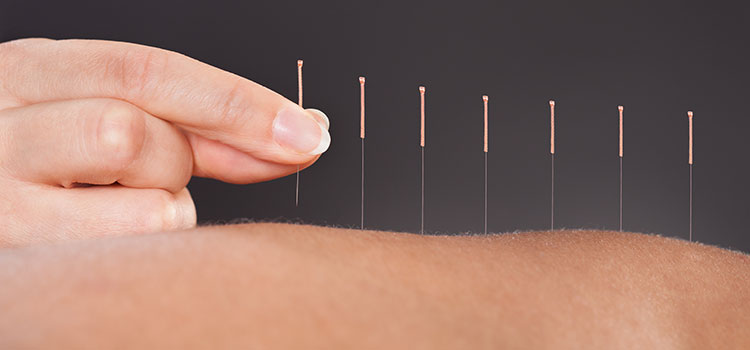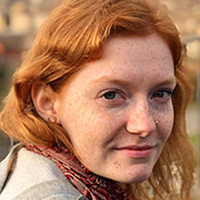Related posts
Differences between reflexology, acupressure, acupuncture and massage

Complementary and alternative medicines (CAMs) have played a pivotal role in human healthcare since time immemorial. Even with modern medical advances, many people still look to ancient medicinal practices for their efficacy and ability to stand the test of time.
Reflexology, acupuncture, acupressure, and massage therapy are four modalities that bear some similarities to one another. “We all assist the flow of energy,” said Linda Frank, a nationally board-certified reflexologist and reflexology instructor with years of experience in massage therapy and acupressure.
All of them are ancient medical techniques that are rooted in similar healthcare and energetic principles and are still widely used today. It’s no surprise, therefore, that although each has been found in numerous cultures around the world, there is a lot of overlap in their ancestry.
Shared origins
Each of these complementary and alternative medicine practices originated thousands of years ago. They evolved over time across many different cultures and were most likely passed down orally for most of their existence. Long before antibiotics, anesthesia, and vaccinations, humans have always been able to use their hands, touch, and pressure to try to soothe others and help their bodies heal.
…humans have always been able to use their hands, touch and pressure to try to soothe others and help their bodies heal.
Reflexology, acupressure, acupuncture, and massage therapy have all been a part of Chinese medicine for millennia. However, there is evidence that some of these modalities were first used in other parts of the world. In the Egyptian tomb of Ankhamor, for example, there are pictograph scenes illustrating people performing reflexology on the feet and hands. These scenes are believed to be from about 2300 B.C. Massage therapy has been a part of many different cultures over time but likely originated in India around 3000 B.C. before making its way to other corners of the world through the centuries.
All these modalities reached a nexus in China around 1000-100 B.C. with the book, “The Yellow Emperor’s Classic of Internal Medicine.” This ancient text references the use of reflexology, massage therapy, acupuncture, and acupressure (among many other techniques) as means to restore balance to the body, which was thought at the time to be the cause of most physical ailments. Although many of the medical techniques described in the book may seem primitive by today’s standards, much of its foundational medical philosophies are considered valid and worthy of study.
Similarities and differences

Reflexology, acupressure, acupuncture, and massage share the concept of using points on the body to relieve stress and promote healing. The philosophy behind these methods emphasizes the interconnectedness of parts of the body and the body’s connection to the mind and spirit.
“All four modalities work through the skin and its underlayers. Nerve fibers from organs often converge with nerve fibers from skin, so the nervous system sometimes doesn’t know where an impulse is coming from or where to send an impulse to,” Frank said. According to Frank, our fascia, which is like a spider-web that covers everything under the skin, is now being considered a body system thanks in part to Dr. Jean-Claude Guimberteau’s micro-photography and the dissection work of Tom Myers.
“Fascia has overtaken skin as the body’s largest organ. It’s being referred to as a kind of ‘second nervous system.’ If fascia interconnects everything in the body, as it’s now been proven to do, we gain some understanding as to how acupuncture, acupressure, massage, and reflexology can be so effective.”
Acupressure vs. acupuncture
Acupressure and acupuncture are perhaps the two most similar modalities. They are based on the fundamental principle that acupoints exist along meridians in our body—energy channels through which qi (pronounced “chee”) flows. By applying pressure to these acupoints, we can stimulate the flow of qi and restore energetic balance to the body.
This can help reduce pain locally and in other parts of the body that are connected by meridians. As their names suggest, acupuncture applies pressure using hair-thin needles that perforate the skin, and acupressure is a non-invasive alternative that applies pressure using our hands or thumbs.
Many studies have demonstrated the effectiveness of acupuncture and acupressure in pain management. Acupressure, though originating in China, eventually migrated to Japan and has evolved into a popular massage technique known as shiatsu. Other popular acupressure techniques include Jin Shin Jyutsu and Jin Shin Do.
Reflexology
Reflexology is a unique modality that involves applying pressure to the feet, hands and outer ears to promote healing, wellness, and balance. These areas, which are jam-packed with nerve bundles, can be stimulated or “reflexed” to send a nervous response to the brain and other parts of the body.
Reflexology maps of the feet, hands, and ears show which areas correspond to other body areas. It can be used to address a variety of ailments including the management of chronic pain and has been shown even to reduce the severity of pain and length of labor in pregnant women.
Although reflexology, as we know it today, doesn’t usually align with the exact acupoints of acupressure or acupuncture, there are some exceptions. “In reflexology, we’re passing over the meridians. There are six meridians that either start or end in the toes and six that start or end in the fingers,” Frank said. “Ear reflexology—maps on the outer ear—are the same maps that acupuncturists use and a naturopath or an acupuncturist can easily incorporate those ear points into their practice.”
Massage therapy
While reflexology focuses mainly on the feet (and occasionally the hands and outer ears), massage therapy is a manual technique that typically applies pressure to the whole body. By kneading and manipulating soft tissue, we can relieve muscular tension, improve circulation and promote relaxation. The research supports massage therapy’s efficacy—among its many uses, it has been shown to reduce pain and increase function for people with musculoskeletal disorders.
According to Frank, even though massage therapy is used most often to relieve pain locally, research done by massage therapists Tom Myers and John Barnes shows us how our muscles are more interconnected than we may have once thought.
“In addition to Tom Myers’ discovery that fascia runs in contiguous sheets—like from the soles of the feet up the backs of the legs and back, and back of neck and head around to the eyebrows—massage therapist John Barnes created a technique called myofascial release where the work is often done where the pain isn’t located.
Barnes found that a glitch anywhere in the myofascial line can cause problems at any other place in the line—often the least moveable part of the line,” Frank said. “He honed in on the fact that the problem may be that the fascial glitch doesn’t show up on an MRI or CT scan, or it’s far from the site of pain. That’s why insurance companies dictating that only areas of pain can be massaged may grossly limit how therapeutic a massage might be.”
Massage therapy encompasses numerous other modalities, and massage therapists can specialize in one or many of these different types of massage.
Starting a career in each modality
The education and licensing requirements for each of these modalities are quite different. No matter which modality (or multiple) you wish to pursue, you first need to be trained by a formal school or program—hands-on practice is the only way to master your chosen technique.
If your state requires your profession to be licensed, you probably also need to pass a national or state-level exam. You can also get certified in each of these techniques, which is optional in some states and required in others.
Acupuncture
Acupuncture requires the greatest amount of education to practice. Although exact licensing requirements vary by state (and a small handful of states have no licensing requirements at all), almost all states require you to have at least a master’s degree from a school accredited by the Accreditation Commission for Acupuncture and Herbal Medicine (ACAOM). Most states also require acupuncturists to pass one or multiple exams such as the exams administered by the National Certification Commission for Acupuncture and Oriental Medicine (NCCAOM).
Acupressure and massage
Starting a career in acupressure and massage therapy are somewhat similar since acupressure is considered a form of massage by most state massage licensing boards in the country. Massage therapists typically must graduate from a massage therapy program, complete a certain number of hours of hands-on practice (usually 500-1000) and pass a massage exam in order to get licensed. People who wish to practice acupressure have to do the same because they probably need a massage license, to begin with. In addition, people who practice acupressure have the option to get certified in Asian Bodywork Therapy (ABT) through NCCAOM, which requires an additional 500 hours of formal ABT practice in order to qualify.
Reflexology
Becoming a reflexologist is a little less straightforward since requirements vary so greatly by state. Regardless of where you want to practice, you should graduate from a reflexology program to learn the technique. These usually take around 200 hours of instruction to complete. It’s also best practice to get certified by the American Reflexology Certification Board (ARCB), which is required in a few states.
Complementary and alternative medicine salaries
CAM care and careers are expected to increase significantly as the public continues to learn the many benefits associated with these natural health specialties.
The U.S. Bureau of Labor Statistics (BLS) estimates that massage therapists’ employment will grow 18.3% through 2031, much faster than the average across all occupations. Acupuncturists, on the other hand, are estimated to grow 5.3% in that same time, about as fast as the average for all occupations.
The BLS does not have data on reflexologists and acupressure practitioners specifically, but they are generally included in the massage therapist data.
While all of these traditional healing arts have their differences, their intended goals and results are similar. Demand for complementary and alternative medicine is rising, and now is the perfect time to join a program that will direct you toward a rewarding and progressive natural health profession.


